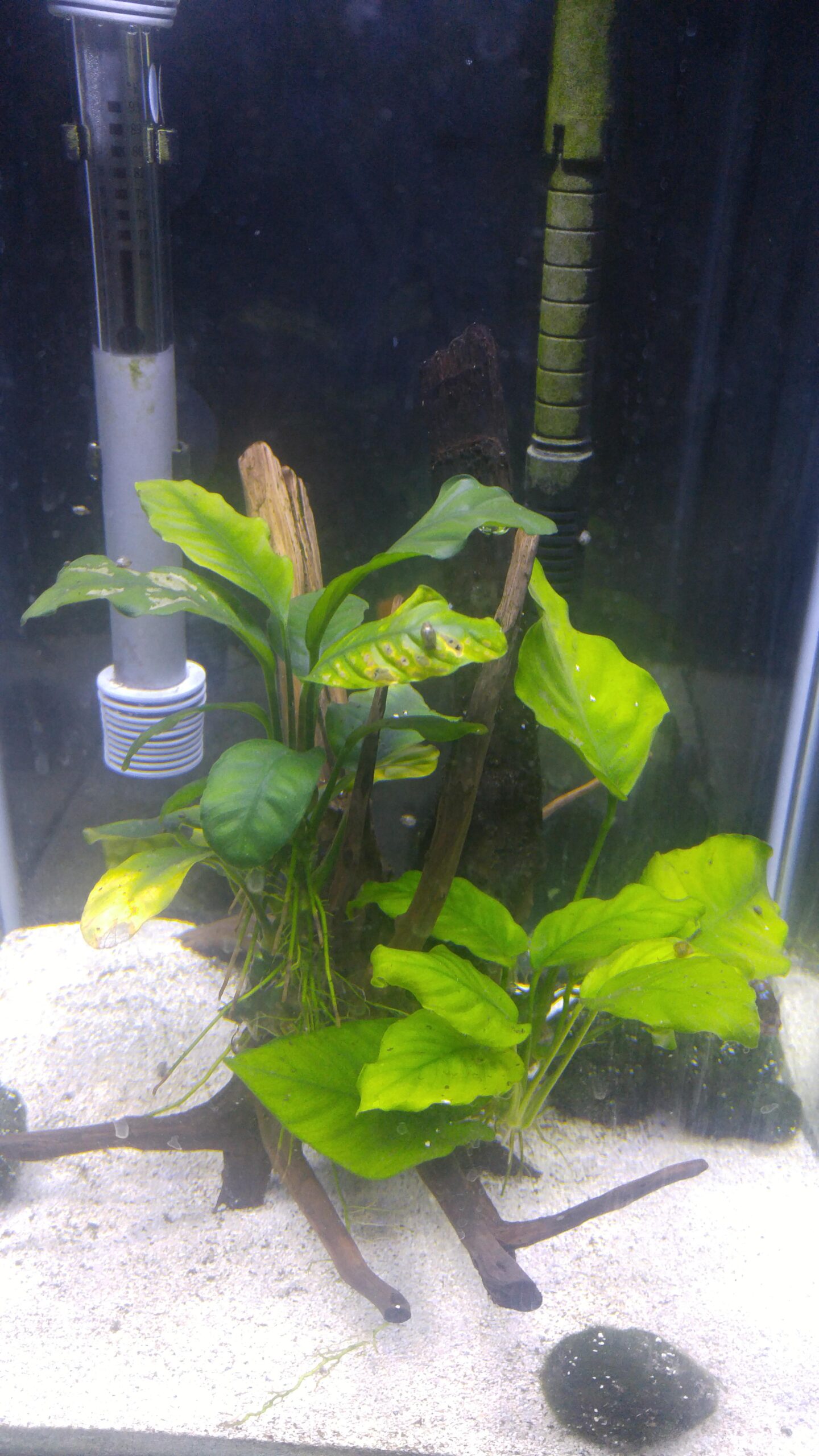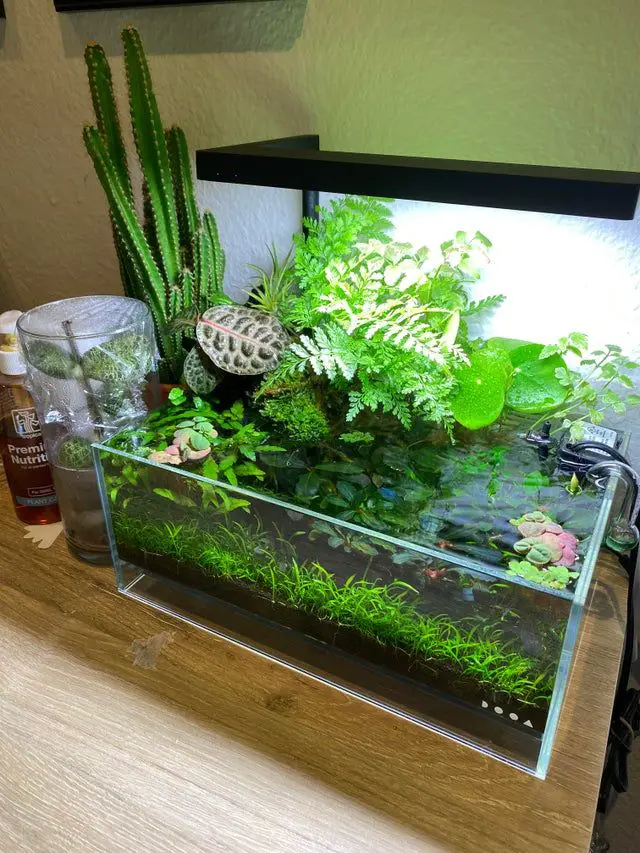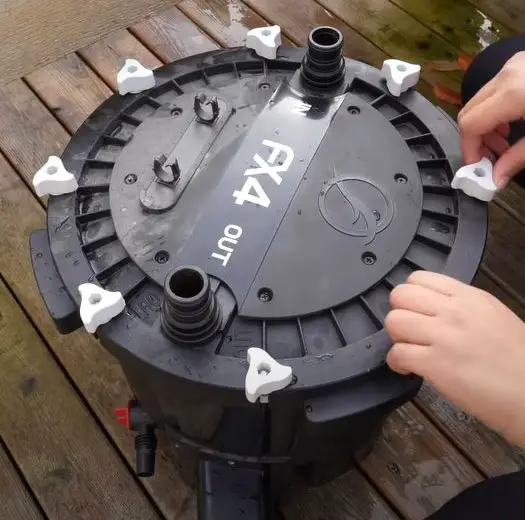Anubias Leaves Turning Yellow
Anubias leaves turning yellow is a common issue with aquarium plants. This can happen due to a variety of reasons, including too much light, lack of fertilizer, or not enough CO2 in the water. If the plant is receiving too much direct sunlight it can cause the leaves to turn yellow.
In this case, you should move the plant away from any direct sunlight sources and provide some shade for it. If there isn’t enough fertilizer being provided to the Anubias then adding more fertilizer could help improve its health and prevent further yellowing of its leaves. Finally, if there isn’t enough carbon dioxide in your aquarium then adding more CO2 will give your Anubias an extra boost of energy so that it can stay healthy and keep its vibrant green coloration.
All these solutions should help reduce or stop your Anubias’ leaves from turning yellow.
It’s normal for Anubias leaves to yellow over time, especially as they age. However, if the leaves of your Anubias are turning yellow more quickly than usual, it could be a sign that the plant is not getting enough light or nutrients. Check your lighting and fertilizer levels to make sure they are optimal for the health of your Anubias.
If this doesn’t help, you may need to move your plant to a brighter spot or look into other solutions such as adding CO2 fertilization or supplementing with additional macro-nutrients like iron and nitrogen.
Anubias Turning Yellow And Brown
Anubias turning yellow and brown is a common issue among aquarium owners. This can be caused by a lack of essential nutrients or due to too much light, as well as water parameters that are not suitable for your plant. It’s important to regularly check the pH level of your tank and make sure you’re providing enough fertilizer in order to avoid any nutrient deficiencies that could lead to discoloration.
Additionally, if you notice Anubias leaves starting to turn yellow or brown, it’s best to move them away from direct light sources until they have recovered their natural coloration.
Anubias Leaves Turning Light Green
Anubias leaves may turn light green due to a lack of iron in the aquarium. This is because iron helps bring out the natural dark green color of Anubias leaves. To remedy this, you should increase the amount of iron supplements given to your plants or use an iron-containing fertilizer solution.
Additionally, make sure that there is enough light and nutrients available for your Anubias plants since they require more than other aquatic plants.
Anubias Yellowing With Holes
Anubias yellowing with holes is a common issue caused by an underlying problem. This can be due to incorrect water parameters, such as too high pH or nitrate levels, or it could also be caused by over-fertilization. In addition, inadequate lighting and poor circulation of the tank’s water can contribute to this problem.
To avoid this issue, make sure that you maintain ideal water parameters and use proper fertilization methods in your tank. Additionally, provide adequate lighting and ensure there is sufficient flow throughout the aquarium for optimal health of your Anubias plant.
Anubias Leaves Turning Brown
Anubias, a popular aquarium plant, is known for its hardiness and ease of care. Unfortunately, sometimes Anubias leaves turn brown due to environmental stressors such as too much direct light or nutrient deficiencies. If your Anubias leaves are turning brown, check the water parameters and lighting levels in your tank to make sure they fall within the recommended range for this species of plant.
Additionally, you can supplement existing nutrients with fertilizer if necessary.
Anubias Nutrient Deficiency
Anubias plants are known to be fairly tolerant of nutrient deficiencies, but they can still suffer from a lack of certain essential nutrients. Iron deficiency is the most common problem with Anubias, as it will manifest itself in yellowing leaves and stunted growth. To avoid this, make sure your Anubias are planted in substrate that contains iron or use an iron-enriched liquid fertilizer on occasion.
Other signs of deficiencies include brown spots on the leaves (potassium) and discolored veins (manganese). If you notice any signs of nutrient deficiency, try supplementing with a balanced fertilizer designed for aquarium plants like Anubias.
Anubias Too Much Light
Anubias plants are a popular choice for aquascaping, but it’s important to remember that too much light can be damaging. Anubias thrive in low-light settings and moderate lighting is best for them; if exposed to too much direct sunlight or aquarium lighting, the leaves may become bleached and start to show signs of burn. It’s best to monitor your Anubias closely if you have intense lights in your tank since they require less than other aquatic plants.
Anubias Turning Pale
Anubias plants are known for their hardy nature and vibrant green leaves, but sometimes they can start to turn pale. Pale leaves may be a sign of a nutrient deficiency, too much light, or poor water quality. To help prevent Anubias turning pale, make sure that your tank is properly maintained with regular water changes and the correct lighting; also check to make sure that any fertilizers used contain all the necessary macronutrients like nitrogen, phosphorus and potassium.
Anubias Turning Yellow Reddit
Anubias turning yellow is a common issue that many aquarists face. This can be caused by several factors, including too much light, too little light, improper water conditions, or nutrient deficiencies. If your Anubias is showing signs of yellowing then it’s important to identify the cause and take corrective action as soon as possible to prevent further damage and ensure the health of your plant.
Fortunately there are plenty of resources available on Reddit such as discussion threads and helpful advice from experienced aquarists that can help you get back on track with keeping your Anubias healthy!

Credit: www.plantedtank.net
Why Do Anubias Leaves Turn Yellow?
Anubias is a type of tropical aquatic plant, which is known for its hardy nature. Unfortunately, even the hardiest plants can suffer from problems including yellowing leaves. Yellowing leaves on Anubias are often caused by too much light and/or nutrient deficiencies in the water column or substrate.
Too much direct sunlight can cause bleaching and subsequent chlorosis (yellowing) of the leaves; this is especially common when newly-planted Anubias are exposed to strong sunlight without any shading. If your Anubias has been placed in an area with low lighting it could be revealing a nutrient deficiency such as iron, potassium or phosphorus – all of which are essential elements for healthy growth. When these nutrients become depleted, other elements like manganese will take their place resulting in poor health and yellowing leaves due to lack of chlorophyll production by the cells that make up each leaf blade.
Why are My Aquarium Plant Leaves Turning Yellow?
If you’ve noticed your aquarium plants’ leaves turning yellow, it could be a sign that something is wrong with the water or environment in your tank. Yellowing leaves can indicate one of several things, including not enough light for photosynthesis, too much light, improper pH levels or nutrient deficiency. Depending on the type of plant in question and its growing conditions, there are various steps to take when trying to solve an issue of yellowed leaves.
When it comes to lighting issues as a potential cause of yellowing leaves, make sure your aquarium lights aren’t too strong or left on for too long; both can lead to bleaching and yellowing over time. If this isn’t the issue though, check out pH levels: if they’re off by just a little bit (either higher or lower than desired), many aquatic plants will show signs of distress like wilting and discoloration. You may want to test nitrate/nitrite levels as well – even low concentrations can affect plant growth adversely!
Lastly look into whether nutrients like iron are deficient; these are necessary for photosynthesis so without them available green becomes scarce pretty quickly!
While some amount of leaf discoloration is normal in any aquarium environment – especially during seasonal changes – if you notice more than usual yellowness in your aquascape don’t hesitate to investigate further what might be causing it. With proper care and attention most problems with leaf discoloration should become manageable easily!
Why is My Anubias Rhizome Turning Yellow?
If you’ve noticed that the rhizome of your Anubias plant is turning yellow, it could be a sign of trouble. Yellowing rhizomes can indicate several different issues ranging from nutrient deficiencies to bacterial or fungal infections. To figure out what might be causing this problem, start by taking a close look at the other parts of the plant such as its leaves and stems for any signs of discoloration or disease.
If there are no visible problems with these areas, then you’ll want to examine the soil and water conditions in which your Anubias is growing. The most common cause of yellowing rhizomes on an Anubias plant is inadequate nutrients in either its soil or water supply; make sure that both have been properly tested and amended if needed. Additionally, since Anubias plants prefer warm temperatures, check to see whether cooler temperatures may be stressing out your plant and leading to yellowing rhizomes.
Finally, keep an eye out for potential pests like snails or slugs which can feed off the roots and weaken them over time. With proper care and attention paid to environmental factors like light levels, humidity levels etc., you should able restore health back into your Anubias’ rhizome—and ultimately save it from further damage!
What is the Best Fertilizer for Anubias?
When it comes to fertilizing Anubias, the best approach is to use a balanced fertilizer that contains both macro and micro nutrients. This will ensure that your plant has access to all of the elements it needs for optimum growth and health. A good option is an aquatic-specific slow release fertilizer such as Seachem Flourish Comprehensive Supplement or Tetra Flora Pride Plant Food which are specifically formulated for aquarium plants like Anubias.
These fertilizers provide a range of essential macronutrients including nitrogen, phosphorus, potassium and trace elements; plus micronutrients such as iron, zinc, manganese and copper. The slow release nature of these products means you don’t have to worry about overdoing it with fertilization – just follow the directions on the packaging for proper dosage levels based on tank size/type etc., and apply according to schedule (usually weekly). Another advantage of using this type of product is that there’s no risk of damaging water chemistry either because they don’t contain any harmful ingredients or pollutants like some other types can do if applied in too great a quantity.
So if you want healthy Anubias with lush green leaves then be sure to invest in quality liquid or tablet-based fertilizer!
Anubias Care Guide – The Best Beginner Plant!
Conclusion
In conclusion, yellowing of Anubias leaves is a natural process that can result from several factors. The most common cause is the lack of nutrients in the soil or water, but it could also be caused by too much sunlight exposure, incorrect pH levels, or old age. Regardless of the cause, it’s important to understand that yellowing does not necessarily mean your Anubias plant is dying and there are steps you can take to remedy the situation.
With proper care and attention, your Anubias should return to its lush green state soon enough!





